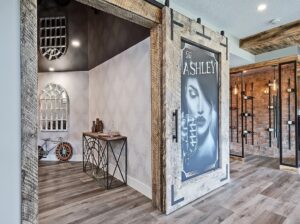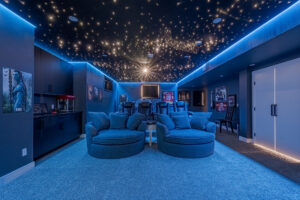Designing or renovating a space? One of the most important aspects to consider is the ceiling. Traditionally, ceilings were seen as functional elements that served to cover the structural components of a building. However, with the advent of modern design trends, ceilings have become an integral part of the overall aesthetic and ambiance of a room. Now, we will explore the age-old debate between stretch ceilings and traditional ceilings, and discuss why stretch ceilings have gained popularity as the preferred choice for those seeking a unique and transformative ceiling solution.
Traditional ceilings, such as plaster or drywall, have long been the standard choice for homes and commercial spaces. While they provide a classic look and are relatively easy to install, they come with limitations that can restrict the creative potential of a space. On the other hand, stretch ceilings offer a revolutionary alternative that opens up a world of design possibilities.
One of the key advantages of stretch ceilings is their seamless and flawless appearance. Unlike traditional ceilings, which may have visible joints or imperfections, stretch ceilings create a smooth and even surface that adds a touch of sophistication to any room. The stretch ceiling system consists of a lightweight fabric membrane that is stretched and clipped into a perimeter track, allowing for a perfectly flat and visually stunning finish.
Flexibility is another major advantage of stretch ceilings. With traditional ceilings, making changes or modifications can be time-consuming and messy. However, stretch ceilings offer easy access to the space above, making it simple to install additional lighting fixtures, ventilation systems, or even hide unsightly wiring. This flexibility allows for effortless customization and ensures that your ceiling can adapt to your changing needs and design preferences.
Stretch ceilings also offer superior durability and longevity compared to traditional ceilings. Made from high-quality materials such as PVC, stretch ceilings are resistant to moisture, mold, and stains, making them an ideal choice for spaces with high humidity levels, such as bathrooms or swimming pool areas. Additionally, stretch ceilings are highly durable and can withstand the test of time without cracking, sagging, or requiring frequent maintenance.
Another significant advantage of stretch ceilings is their ability to enhance acoustics. Traditional ceilings can often create echoing or reverberation issues in large or open spaces, negatively impacting the overall sound quality. Stretch ceilings can be combined with acoustic panels or insulation materials to improve sound absorption, resulting in a more pleasant and comfortable environment.
While traditional ceilings have their charm and practicality, stretch ceilings offer a unique and transformative solution for those looking to elevate their space. With their seamless appearance, flexibility, durability, and acoustic benefits, stretch ceilings have become the preferred choice for homeowners and designers who seek to create visually stunning and functional interiors. Whether you’re renovating your home or designing a commercial space, consider the endless possibilities that stretch ceilings bring to the table and make an informed decision based on your aesthetic preferences and practical needs.



